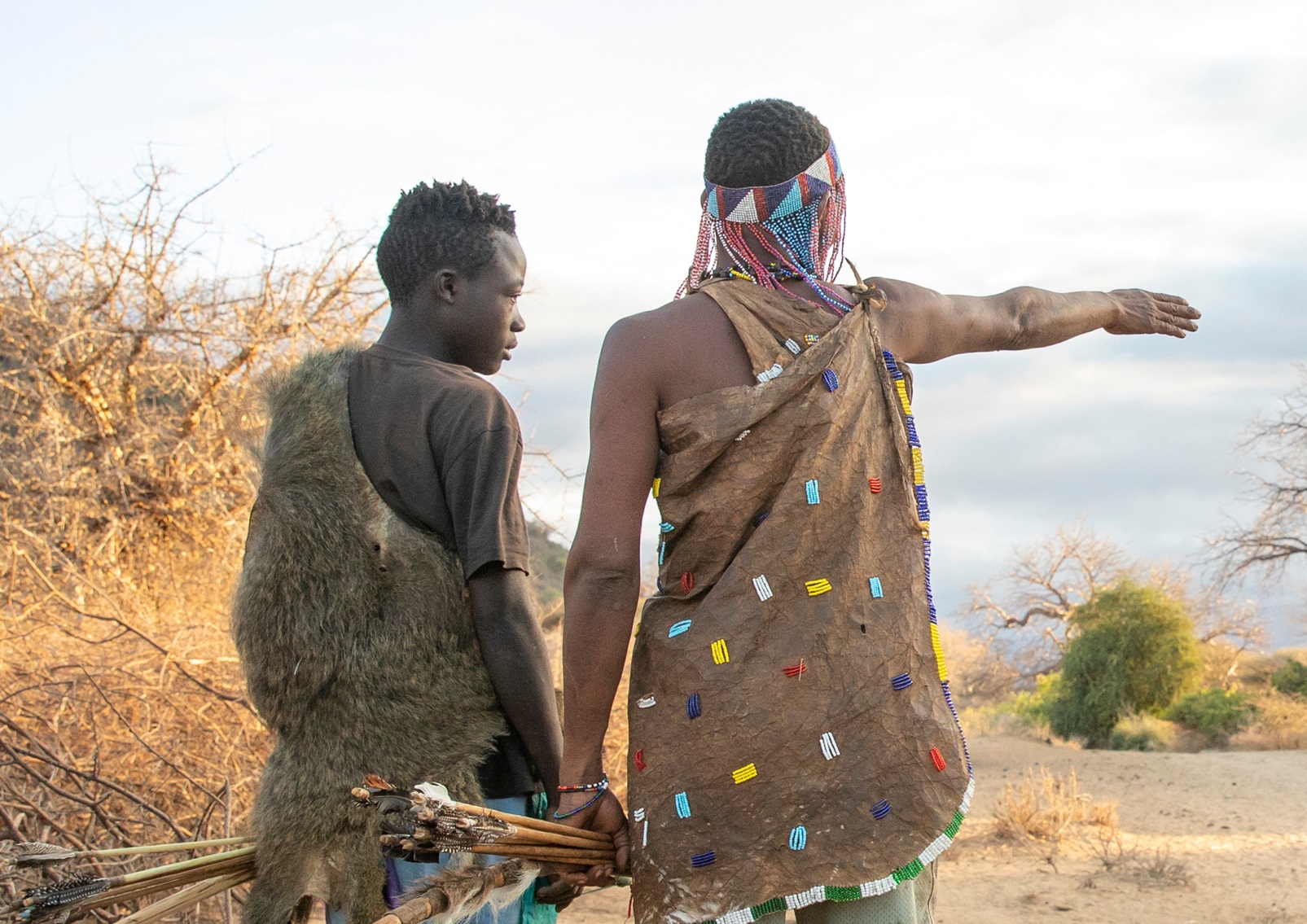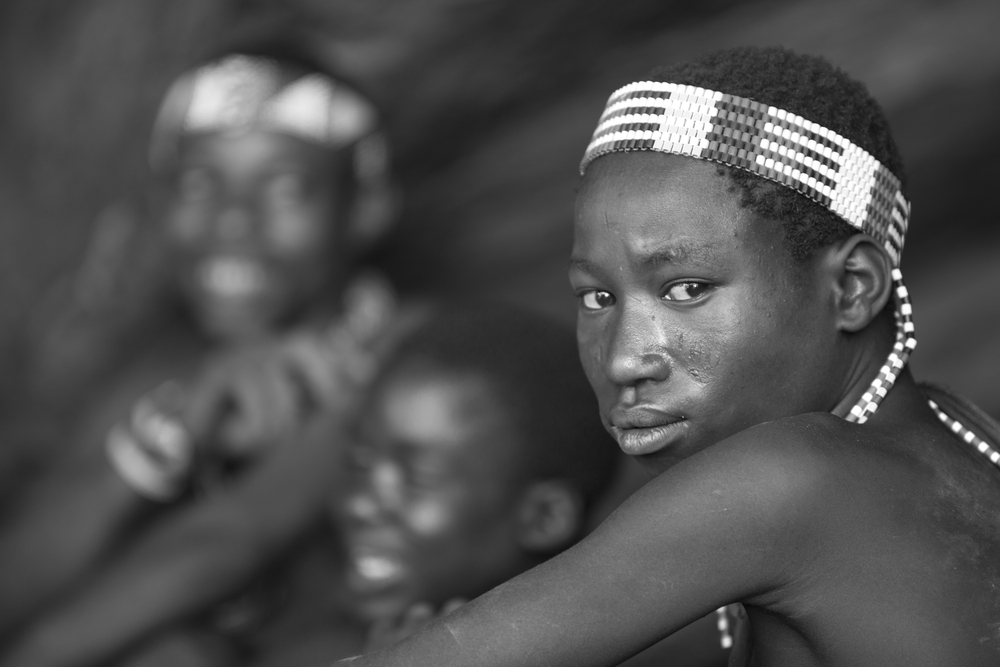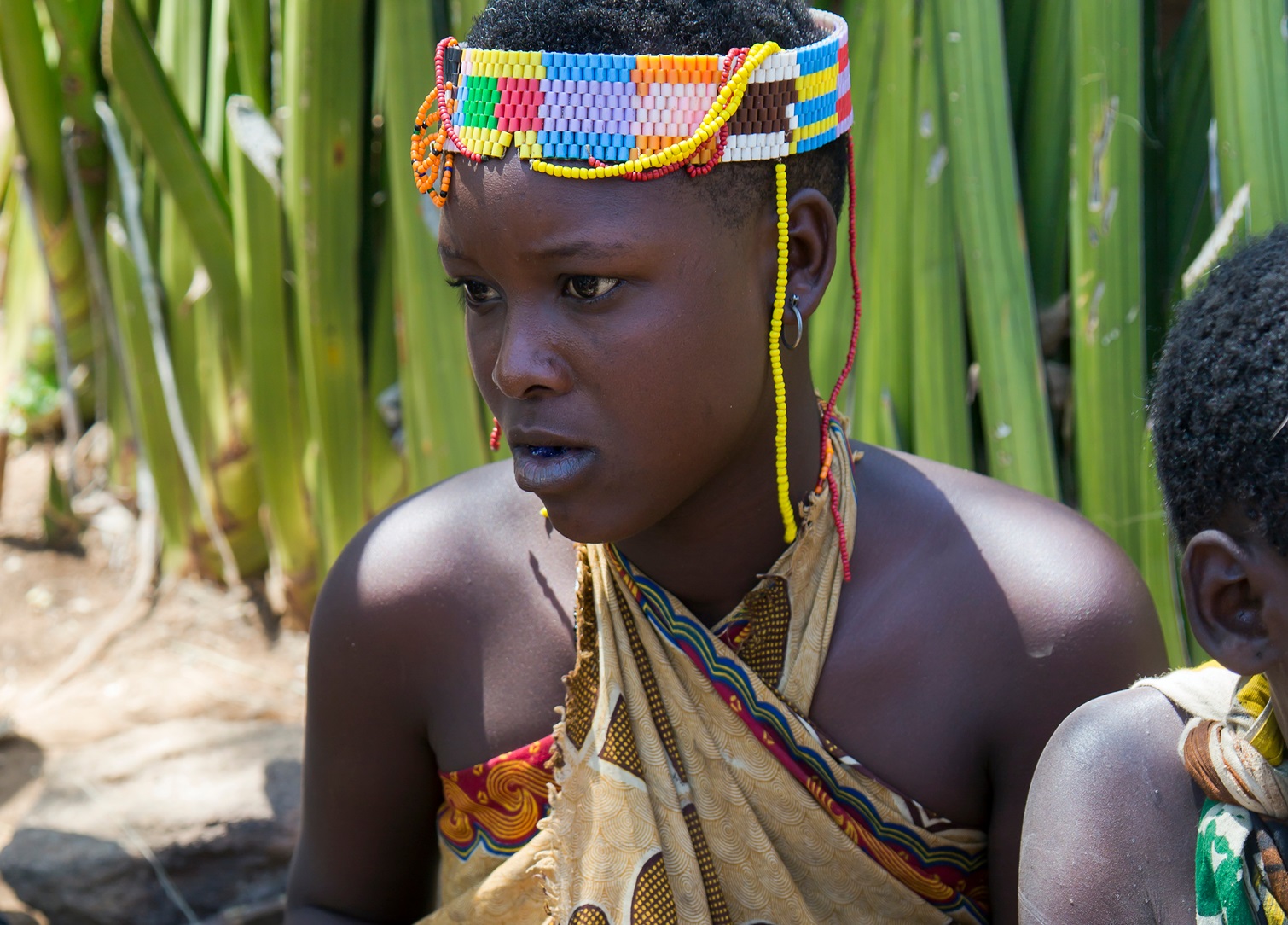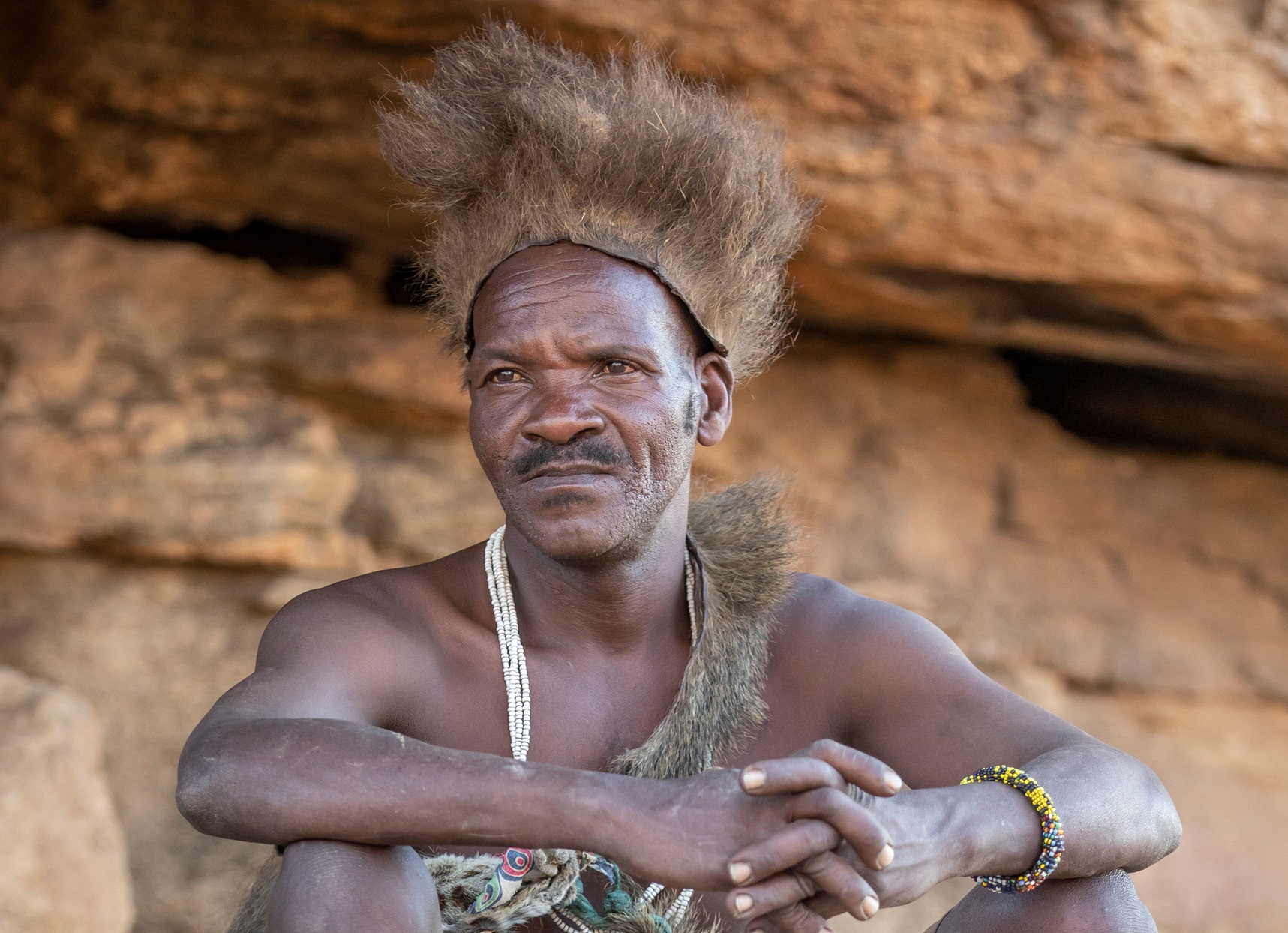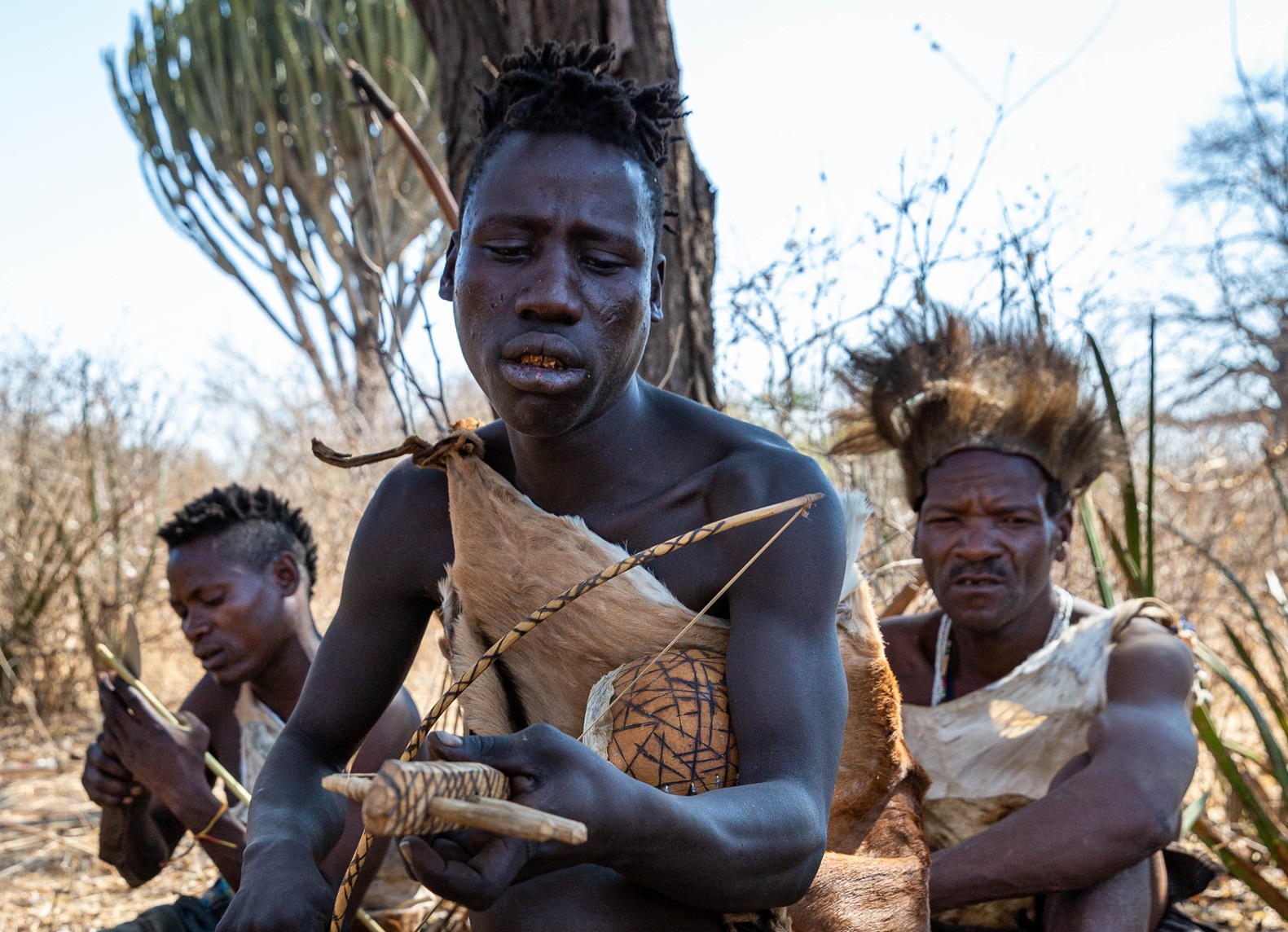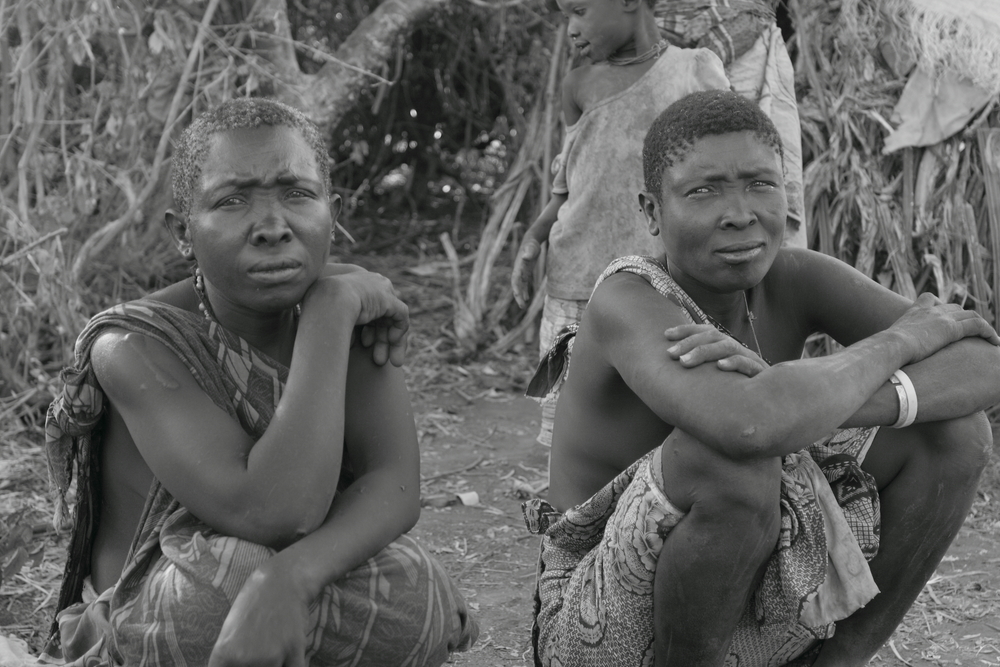Meet The Hadza
The Hadza people are a true rarity: They are some of the last hunter-gatherers on Earth and the only tribe of their kind in Northern Africa. For thousands of years, they've manage to survive in the forests surrounding Lake Eyasi. Yet while the Hadza themselves are peaceful pacifists, they've had to overcome many threats from their neighbors—and the ever-expanding interests of the modern world remain a danger to their ancient way of life. This is their story.

Their Origins
Archeologists believe the Hadza have been living in their territory, called Hadzaland, for more than 15,000 years. Hadzaland is close to the Olduvai Gorge, a place that has been called the "Cradle of Mankind" for all the human fossils that have been discovered there.
 Erasmus Kamugisha, CC BY-SA 4.0, Wikimedia Commons
Erasmus Kamugisha, CC BY-SA 4.0, Wikimedia Commons
Where Do They Live Now?
The Hadza live near Lake Eyasi, one of the largest rivers in Tanzania. There are about 1,000 Hadza people in Tanzania.
Still The Same
The Hadza of today have changed little from their ancestors. They still use the same foraging and hunting techniques, and despite pressures from outsiders, there’s been no change in their egalitarian way of living.
 Arnold Tibaijuka, CC BY-SA 4.0, Wikimedia Commons
Arnold Tibaijuka, CC BY-SA 4.0, Wikimedia Commons
Hadza Clothes
While interactions with tourists have led some Hadza to embrace Western clothing, many Hadza still wear the tribe’s traditional clothes, made from animal skins.
 Masele Czeus25, CC BY-SA 4.0, Wikimedia Commons
Masele Czeus25, CC BY-SA 4.0, Wikimedia Commons
Hadza Clothes (cont’d)
Traditionally, Hadza women wore skirts and dresses made from the hides of impala. Sometimes, they decorated their skirts with cowrie shells and beads. Men wore loincloths that were held in place by a think leather belt.
 Imani selemani Nsamila, CC BY-SA 4.0, Wikimedia Commons
Imani selemani Nsamila, CC BY-SA 4.0, Wikimedia Commons
Hadza Clothes (cont’d)
All Hadza wear sandals, which were traditionally made out of zebra or wildebeest hide. Nowadays, it’s common to make the soles of the sandals out of old car tires.
Their Language
The Hadza language is called Hadzane. Though it was once thought to be a Khosian language for its use of clicking sounds, linguists have now determined that is a completely unique language, unlike any other on the planet.
 kiwiexplorer, CC BY-SA 2.0,Wikimedia Commons
kiwiexplorer, CC BY-SA 2.0,Wikimedia Commons
Their Language (cont’d)
Hadzane is an oral language with no written form. Hadza people usually learn Hadzane when they are children, andproficiency in the language is a way of determining is someone of Hadza. In addition to Hadzane, many Hadza also speak Swahili, which is the national language of Tanzania.
 Ron Rieckenberg, CC BY-SA 3.0, Wikimedia Commons
Ron Rieckenberg, CC BY-SA 3.0, Wikimedia Commons
The Bantu Expansion
Up until 500 BCE, most of the tribes in Tanzania were hunter-gatherers like the Hadza. Things started to change with the Bantu expansion into Tazania, which saw an influx of new farmers who brought tools and weapons with them.
The Last Hunter-Gatherers
Over the next few hundred years, several expansions of Bantu and Sudanese farmers displaced the hunter-gatherers, who lost valuable hunting grounds for the creation of farmland and pastures. Now, the Hadza are the only hunter-gatherers in the region.
 Andreas Lederer, CC BY 2.0, Wikimedia Commons
Andreas Lederer, CC BY 2.0, Wikimedia Commons
The Isanzu
The Hadza first encountered the pastoral Isanzu people around 1850—and their interactions were often hostile. The Hadza had no understanding of animal ownership, so they would hunt the Isanzu’s livestock. To say the Isanzu were mad would be an understatement.
Bitter Enemies
Viewing the Hadza as livestock thieves, the Isanzu took to killing Hadza hunters as punishment. This hostility escalated during the Atlantic slave trade, and there’s evidence to suggest that the Isanzu captured and sold Hadza people until the practice was prohibited by the German colonial government in the 1870s.
 Calvin pro7, CC BY-SA 4.0, Wikimedia Commons
Calvin pro7, CC BY-SA 4.0, Wikimedia Commons
A New Relationship
The Isanzu and the Hadza went on to have a complex relationship. While the two tribes established a good trading relationship and saw some cases of intermarriage, there are reports that the Hadza remained distressful of the Isanzu and were ready to go to war with them up until around 1912.
The Sukuma
The Hadza were much friendlier with the Sukuma people. The Sukuma would migrate with their herds and salt caravans through Hadzaland. The Hadza also allowed the Sukuma to hunt elephants on their territory in exchange for metal tools that they crafted into arrowheads.
 Bundesarchiv, Walther Dobbertin, CC-BY-SA 3.0, CC BY-SA 3.0 DE, Wikimedia Commons
Bundesarchiv, Walther Dobbertin, CC-BY-SA 3.0, CC BY-SA 3.0 DE, Wikimedia Commons
Hadza Myths
The Isanzu show up in Hadza myths as helpful neighbors. In some stories, it is a man from the Isanzu tribe who saves the Hadza from an evil giant. Other tales tell of the Isanzu teaching the Hadza peaceful ways to live.
Ishoko and Haine
Ishoko and Haine are important heroes in Hadza mythology. According to Hadza myths, the sky used to be below the earth. Ishoko and Haine rolled the earth and sky together and made it so that the sky was up above.
 Eid John, CC BY-SA 4.0, Wikimedia Commons
Eid John, CC BY-SA 4.0, Wikimedia Commons
The Gift Of Fire
Ishoko and Haine also gave fire to humanity and showed people how to sit down, choose proper places to live, and determine which food they could eat.
 BrixL, CC BY-SA 4.0, Wikimedia Commons
BrixL, CC BY-SA 4.0, Wikimedia Commons
Yin And Yang
Ishoko and Haine have celestial symbolism: Ishoko is connected to the sun, while her husband Haine is connected to the moon.
 Eid John, CC BY-SA 4.0, Wikimedia Commons
Eid John, CC BY-SA 4.0, Wikimedia Commons
Ishoye’s Tale
Some Hadza stories tell tales of a woman called Ishoye, which may be another name for Ishoko. Ishoye created animals and people, and in some myths, her creations turned into man-eating giants. She later killed the giants when she saw all the havoc they wrought upon the world.
 Calvin pro7, CC BY-SA 4.0, Wikimedia Commons
Calvin pro7, CC BY-SA 4.0, Wikimedia Commons
Indaya
One important Hadza myth is the story of Indaya. When Indaya died, he travelled to the land of the Isanzu people. There, he learned about goods and customs, and brought that knowledge back to the Hadza upon his resurrection.
Britain Takes Over
In 1920, as part of the Treaty of Versailles, Britain was given control over Tanzania. In 1927, the colonial government tried to get the Hadza to take up farming and move to permanent settlements. The Hadza refused.
 Rwebogora, CC BY-SA 4.0, Wikimedia Commons
Rwebogora, CC BY-SA 4.0, Wikimedia Commons
They Refused To Settle
The British weren’t the only ones who wanted the Hadza to settle down. After the country gained independence, the Tanzanian government tried to get the Hadza to take up a sedentary lifestyle. Both attempts failed, as did several attempts from missionary groups.
 Calvin pro7, CC BY-SA 4.0, Wikimedia Commons
Calvin pro7, CC BY-SA 4.0, Wikimedia Commons
An Extended Visit
The Hadza occasionally settle temporarily in towns. In the past, governments have tried to entice the Hadza to settle in towns by giving them food. However, once the food runs out, the Hadza go back to their hunter-gatherer lifestyle.
 Erasmus Kamugisha, CC BY-SA 4.0, Wikimedia Commons
Erasmus Kamugisha, CC BY-SA 4.0, Wikimedia Commons
The Threat Of Disease
Attempts to settle the Hadza have also failed because of disease. Since their communities are so isolated, the Hadza are more susceptible to fall dangerously ill from common infections, like measles. Sedentary communities are often the perfect breeding ground for disease, which has resulted in a few attempts to settle the Hadza ending with mass casualties.
 Calvin pro7, CC BY-SA 4.0, Wikimedia Commons
Calvin pro7, CC BY-SA 4.0, Wikimedia Commons
The Four Villages
In 1965, the Tanzanian government built four villages for the Hadza. Two of the villages are now home to the Isanzu, Iraqw, and Datooga. The Hadza do stop by the other two villages, to farm for a few months before moving on.
Hadza Education
Some Hadza let their children go to school when they are in the towns. However, for the most part, Hadza children learn from their parents and community members.
 Erasmus Kamugisha, CC BY-SA 4.0, Wikimedia Commons
Erasmus Kamugisha, CC BY-SA 4.0, Wikimedia Commons
Hadza Economy
The Hadza do not use money, but instead rely on a system of bartering. They spend several hours a day hunting, and exchange meat and honey with the Datooga to get metal arrowheads and vegetables.
Hadza Camps
Typically, the Hadza live in camps made up of 20 to 30 people. During the berry season, camps may grow to include more than 100 people.
Hadza Shelters
During the dry season, the Hadza sleep out in the open next to campfires. They usually form several fires in a semi-circle, with two to six people for each fire.
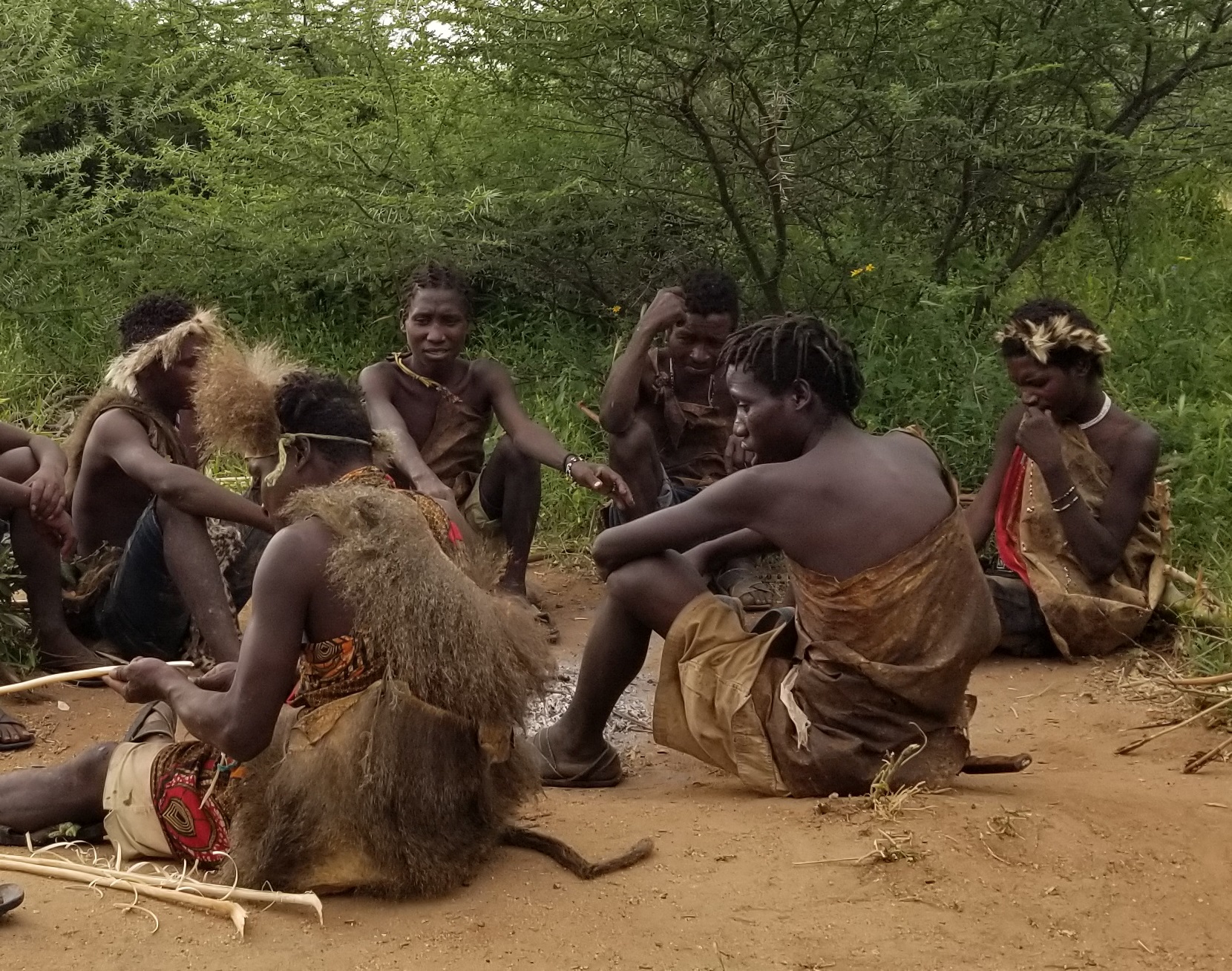 Masele Czeus25, CC BY-SA 4.0, Wikimedia Commons
Masele Czeus25, CC BY-SA 4.0, Wikimedia Commons
Hadza Shelters (cont’d)
In the rainy season, the Hadza make simple domed shelters out of long grasses and twigs. These homes usually take less than an hour to make.
 Calvin pro7, CC BY-SA 4.0, Wikimedia Commons
Calvin pro7, CC BY-SA 4.0, Wikimedia Commons
Equal Rights For All
The Hadza are an egalitarian society, without any chiefs or governing hierarchy. Decisions in the tribe are made after they have been discussed and agreed upon.
 Masele Czeus25, CC BY-SA 4.0, Wikimedia Commons
Masele Czeus25, CC BY-SA 4.0, Wikimedia Commons
Equal Rights For All (cont’d)
Because of their egalitarian nature, everyone in a camp is treated the same, with no one being of higher status than anyone else. Elders are the only ones that get slightly more respect within their community.
 Arnold Tibaijuka, CC BY-SA 4.0, Wikimedia Commons
Arnold Tibaijuka, CC BY-SA 4.0, Wikimedia Commons
Hadza Conflict Resolution
Disputes among the Hadza rarely turn violent. If they cannot be resolved with the mitigation of an impartial third party, it’s common for one of the wronged parties to move to willingly move to another camp.
 Rwebogora, CC BY-SA 4.0, Wikimedia Commons
Rwebogora, CC BY-SA 4.0, Wikimedia Commons
Tracing Lineages
The Hadza use both paternal and maternal lines to trace their lineage. For the most part, women are treated equally to men.
Hadza Childrearing
Raising children is a communal responsibility among the Hadza. Regardless of their blood relations, everyone takes good care of each other’s children.
 Rwebogora, CC BY-SA 4.0, Wikimedia Commons
Rwebogora, CC BY-SA 4.0, Wikimedia Commons
Migration
The Hadza migrate according to the season. They also move camp if a member of the tribe gets sick or passes away, since they believe that illness is associated with the land where a person got caught the sickness.
Temporary Camps
The Hadza sometimes make temporary camp while hunting. If a man makes a big kill, like a giraffe, then he’ll build a small camp around the kill site. The Hadza have few individual possessions, so it’s easy to pack up all their things and move camp.
Hadza Marriage
The Hadza are monogamous, but they do not have any formal wedding ceremonies. Once they are married, the couple may decide which family to live with. There is a slight preference to living with the woman’s family.
Hadza Marriage (cont’d)
It is fairly common for people to get divorced, so to speak, every few years and take up with a new partner. Anthropologists have noticed that Hadza women are usually the ones to initiate a breakup, especially in cases where a man is a poor hunter or mistreats his partner.
 Idobi, CC BY-SA 3.0, Wikimedia Commons
Idobi, CC BY-SA 3.0, Wikimedia Commons
Division Of Responsibilities
When it comes to divvying up tasks, men usually hunt and forage for honey and baobab fruit. Women are responsible for finding berries, tubers, and greens, thought it’s not uncommon for women and men to both forage for the same items.
 A_Peach, CC BY 2.0, Wikimedia Commons
A_Peach, CC BY 2.0, Wikimedia Commons
What Do They Eat?
During the rainy season, the Hadza eat honey, tubers, and fruit that they forage. They sometimes have meat, but game is more plentiful during the dry season.
Hadza Foraging
When men forage, they usually do so alone. Women go out in foraging parties, or with a man accompanying the group.
Hada Hunting
Hadza men hunt at night in pairs. They wait for animals near waterholes, shooting those that approach with poisoned arrows. The poison is made from branches of the desert rose.
Honey
Honey is very important to the Hadza, and they have a unique way of finding it: a wild bird called the Greater honeyguide. The honeyguide likes to eat beeswax and has learned that the easiest way of accessing the wax, is with help from the Hadza.
Following The Honeyguide
The Greater honeyguide uses a distinct chirp to call the Hadza honey-hunters to a bees’ nest. Once the hunter has located the nest, he and his partner will hammer pointed sticks into the tree trunk and use the sticks as a ladder. Then, they subdue the bees with smoke and break into the nest with an axe.
Following The Honeyguide (cont’d)
Once the hunters have eaten and collected all the honey, they leave the wax for the Greater honeyguide. Sometimes, to keep the birds hungry and keen to search out bees’ nests, the hunter will burn or bury some of the wax.
Lots Of Honey
Honey makes up a large portion of the Hadza diet, accounting for up to 20% of their caloric intake.
Hadza Religion
As far as outsiders know, the Hadza do not have a formal religion. They do, however, have spiritual practices and rituals, like offering prayers to the sun and moon (personified as Ishoko and Haine) during hunts. The Hadza also believe that when they die, they will go to Ishoko.
Hadza Burials
In keeping with their pragmatic worldview, the Hadza keep things simple when it comes to burying their departed relatives. Graves are kept simple, and are covered with dome dry twigs over the top, once that’s done, the rest of the group leaves the burial site, without much display of their grief or long farewells.
In the past, the Hadza used to leave the bodies of the departed out in the open on the ground, signifying their nature’s role in the cycle of life.
Epeme
The concept of “epeme” is important to the Hadza and refers to their view of hunting, manhood, and the relationship between men and women. After making a successful big game kill, like a lion, giraffe, or buffalo, Hadza men earn the right to be called epeme men.
Time To Kill
Men usually make their first big kill in their early 20s. If they have not achieved this feat by the time they reach their 30s, the man earns the right to be called epeme then.
Epeme Meat
Certain parts of big game animals, like the heart, kidney, and lungs, are considered to be epeme meat. Only epeme men can eat these parts of the animal.
The Epeme Dance
One of the Hadza’s most important ritual is the epeme dance, which occurs on nights when the moon isn’t visible. The Hadza perform the dance in the dark, with all their camp fires snuffed out.
 Masele Czeus25, CC BY-SA 4.0, Wikimedia Commons
Masele Czeus25, CC BY-SA 4.0, Wikimedia Commons
Preparing For The Dance
Just before the epeme dance, the women leave the men, and gather nearby out of eyesight. Meanwhile, the men get dressed for the dance, donning a long black cape, a headdress made of ostrich feathers, a string of bells on his right ankle, and carrying a rattle.
Beginning The Dance
The women initiate the epeme dance, by singing. Once the singing starts, the first epeme man begins to dance, stomping his right foot in time with the music. He also uses his rattle during the dance, to mark the beat of the music. Eventually, the man sings to the women, beginning a series of call and response.
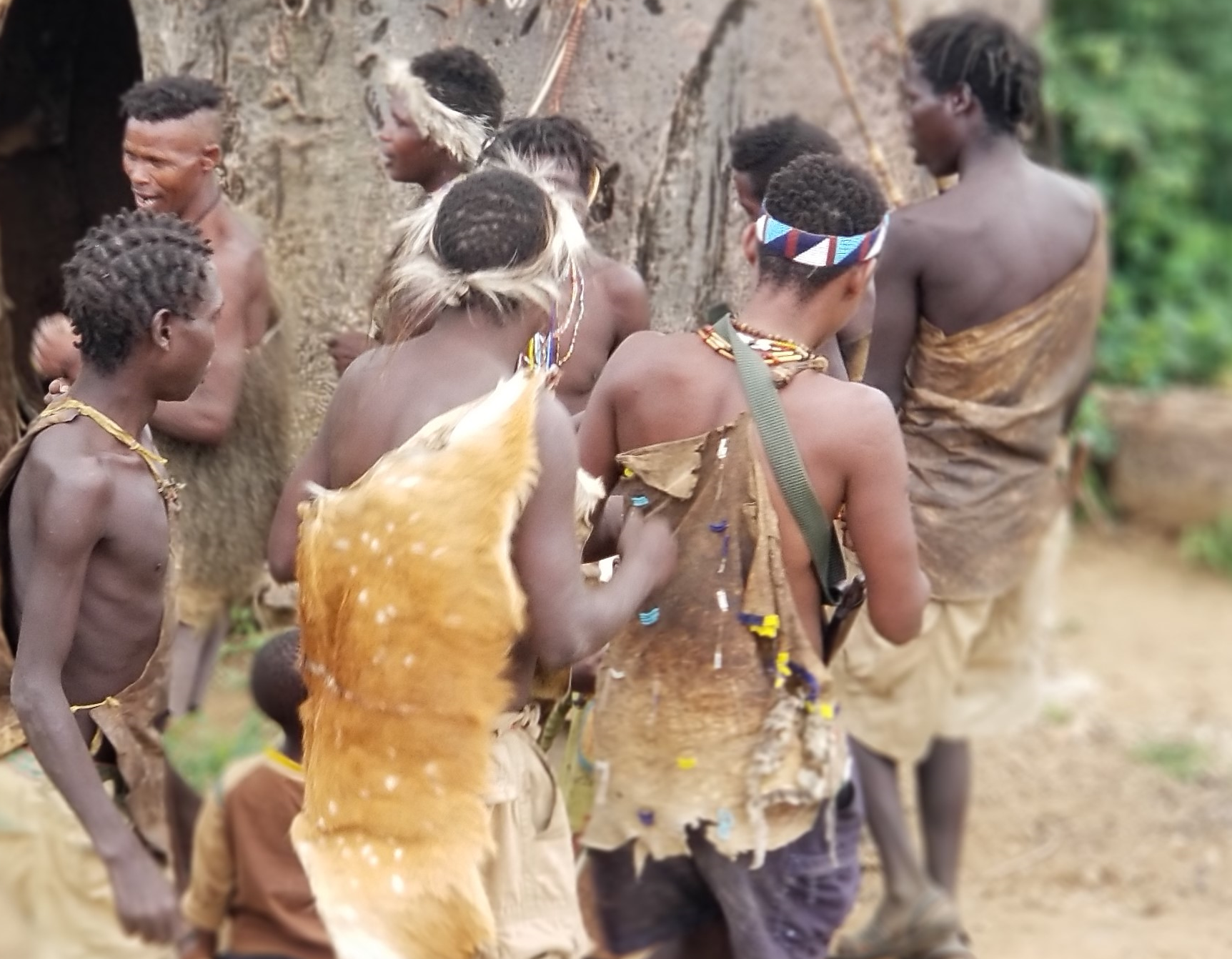 Masele Czeus25, CC BY-SA 4.0, Wikimedia Commons
Masele Czeus25, CC BY-SA 4.0, Wikimedia Commons
A Long Ceremony
Throughout the dance, the women’s singing grows stronger. Towards the end of the dance, they will join the man. The epeme ritual ends once all the men have danced two or three times. It usually takes most of the night, ending around midnight.
 Rwebogora, CC BY-SA 4.0, Wikimedia Commons
Rwebogora, CC BY-SA 4.0, Wikimedia Commons
Symbolism Of The Dance
The act of dancing signifies the man’s commitment to his family and friends. The ritual is also a way of fostering social cohesion among the community.
The Four Epochs
In the Hadza’s oral history, the tribe’s past is divided into four unique epochs. The fourth epoch is the modern age, with Hadza referring to themselves in the oral traditions as hamayishonebee, the “People of Today”.
 Erasmus Kamugisha, CC BY-SA 4.0, Wikimedia Commons
Erasmus Kamugisha, CC BY-SA 4.0, Wikimedia Commons
The First Epoch
During the first epoch, hairy giants called the akakaanebee, meaning “first ones”, or geranebee, meaning “ancient ones” roamed the earth. The First Ones did not have fire or tools, so they hunted by chasing their prey until it collapsed from exhaustion and ate their meat raw. The giants also slept under trees, a tradition the Hadza continue to uphold during Tanzania’s dry season.
 Masele Czeus25, CC BY-SA 4.0, Wikimedia Commons
Masele Czeus25, CC BY-SA 4.0, Wikimedia Commons
The Second Epoch
During the second epoch, the akakaanebee were conquered by the xhaaxhaanebee, which means “in-between ones”. The In-between Ones looked liked the First Ones, but without all the hair.
 Erasmus Kamugisha, CC BY-SA 4.0, Wikimedia Commons
Erasmus Kamugisha, CC BY-SA 4.0, Wikimedia Commons
The Second Epoch (cont’d)
The In-Between Ones lived in caves and knew how to use fire, but the animals had learned to fear the giants. So, the In-Between Ones learned how to hunt with dogs. They also learned how to use medicine to heal themselves and charms that could protect them against enemies.
 Ron Rieckenberg, CC BY-SA 3.0, Wikimedia Commons
Ron Rieckenberg, CC BY-SA 3.0, Wikimedia Commons
The Third Epoch
In the third epoch, the hamakwanebee, or “People of Recent Days”, invented tools like cooking containers and bows and arrows. They were smaller than the giants, and more like the Hadza of today. It’s said that the People of Recent Days were the first Hadza to trade with outsiders, receiving iron that they used to make arrowheads and knives.
 Idobi, CC BY-SA 3.0, Wikimedia Commons
Idobi, CC BY-SA 3.0, Wikimedia Commons
Hadza Giants
Giants are common characters in Isanzu myths. While they are large with superhuman strength, they have human needs and weaknesses—giants still need to food and water and can suffer from things like being poisoned or deceived.
Sengani
Sengani is a giant who served as Haine’s helper. According to the myth, Haine left Sengani in charge of ruling the people, but while Haine was gone, Sengani made bad choices that put the Hadza in danger.
Sengani (cont’d)
Seeing how poor Sengani’s leadership was, the people refused to listen to him. Angered, Sengani commanded lions to attack the people. Before this, humans and lions had lived in peace, so many people were taken by surprise when the animals attacked. The humans eventually sought revenge against Sengani and killed him.
Ssaabo and Waonelakhi
Sengani had two brothers, Ssaabo and Waonelakhi, who were even crueler than him. Ssaabo and Waonelakhi used to slaughter and beat the Hadza. Legend has it that after getting help from neighboring tribes, the Hadza were able to trick the giants, and kill them with poison or poisoned arrows.
!Esengego
!Esengego is another important giant in Hadza mythology. To stop him from eating people, the divine being Ishoko sent a snake to kill the giant and his family. Ishoko then transformed their bodies into leopards, and forbade them from attacking people unless they were provoked. SelimBT, Shutterstock
SelimBT, Shutterstock
!Hongongoschá
Unlike most other giants in Hadza mythology, !Hongongoschá did not cause to much trouble for the Hadza. He was, however, a bit of a trickster and used to sneak into people’s homes at night to take small trinkets or vegetables to eat.
!Hongongoschá (cont’d)
!Hongongoschá was highly respected by the Hadza and would often wish them luck on their hunts—that is, until one incident changed everything. One day, a boy hurt !Hongongoschá on purpose. The giant got his revenge by taking the boy’s life. After the slaying, the god Haine intervened to prevent further bloodshed. Haine told the people what happened between the boy and the giant and then transformed !Hongongoschá into a huge white clam.
 MOIZ HUSEIN STORYTELLER, Shutterstock
MOIZ HUSEIN STORYTELLER, Shutterstock
Losing Ground
In the past few decades, the Hadza have lost much of their traditional territory. In addition to other tribes moving into the area, farmers and the Tanzanian government have restricted the Hadza’s access to their ancestral lands.
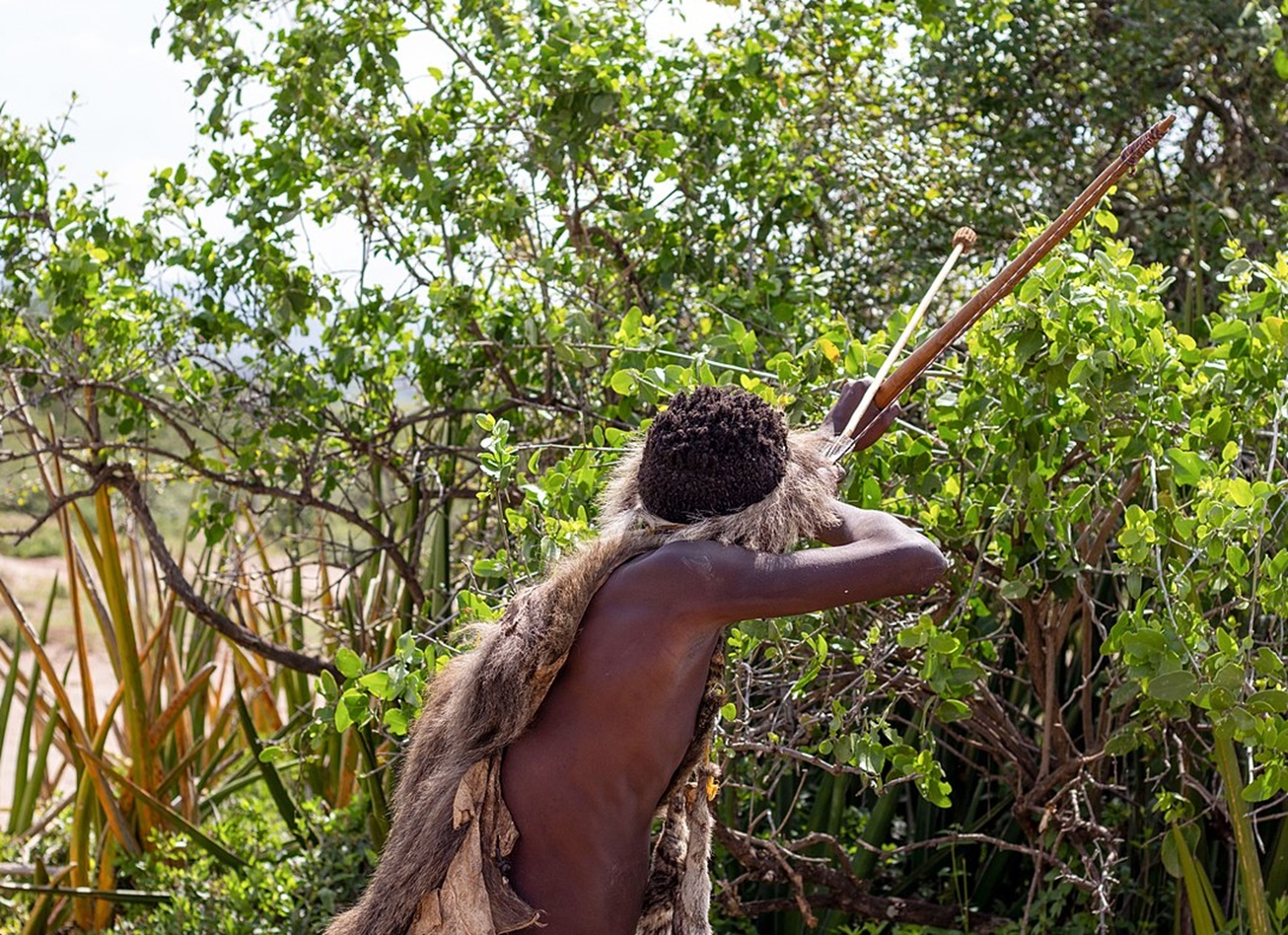 Calvin pro7, CC BY-SA 4.0, Wikimedia Commons
Calvin pro7, CC BY-SA 4.0, Wikimedia Commons
The Reservation
The western part of Hadzaland is now a private hunting reserve, which also contains a small reservation for the Hadza. The Hadza are allowed to hunt within the confines of the reserve, but not in the rest of the private hunting lands.
Datooga Farmers
The Datooga people have also taken much land from the Hadza. The Datooga are cattle herders, and they often clear out land for their pastures. This has destroyed a lot of the tubers, berries, and honey that are crucial to the Hadza’s diet.
 Kathy Gerber, CC BY-SA 2.0, Wikimedia Commons
Kathy Gerber, CC BY-SA 2.0, Wikimedia Commons
Hadza Tourism
Over the past several years, the Hadza have captured the interest of tourists. The Mongol Hadza are the most popular Hadza community, and they welcome visitors to experience their traditional way of life. Activities like learning how to bow hunt and see tribal dances are just a couple of the things one can expect from a visit with the Hadza.
Final Thoughts
The Hadza offer a rare glimpse into what life was like for our ancestors—in fact, their way of life is so unchanged that anthropologists have called them "living fossils". Throughout their long history, they managed to hold their own against the violent neighbors and suppressive colonial powers. And where many tribes have changed their customs to assimilate with modern powers that encroach on their ancestral lands, the Hadza still choose to do things their way.
Tourism is a double-edged sword for the Hadza, but it does mean that there is growing interest in helping them stay true to their authentic lifestyle, which is well worth preserving.






